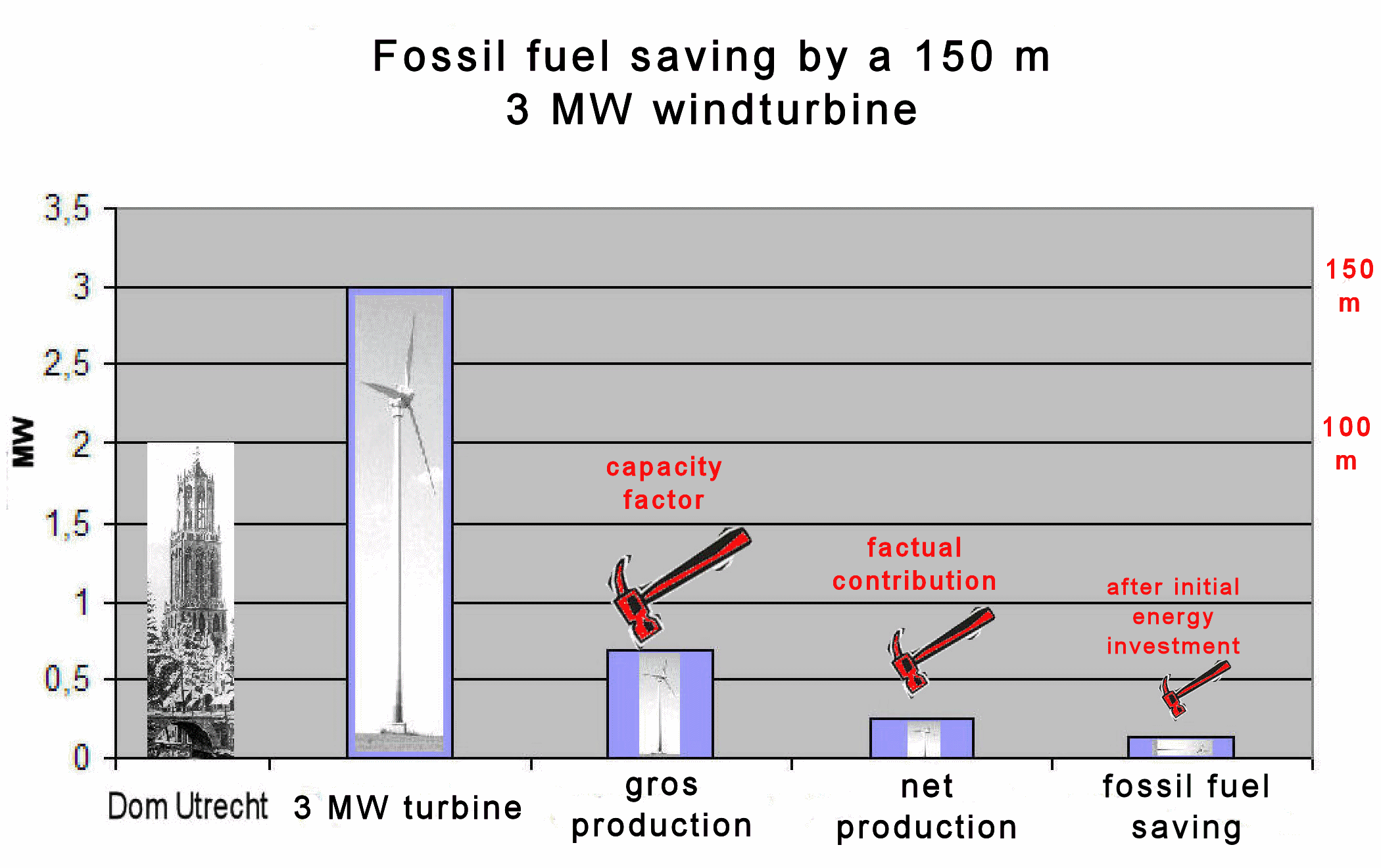A
Dutch analysis finds that wind energy reduces emissions and fossil fuel use by a maximum of only 1.6% compared to directly generating energy from fossil fuels. Furthermore, the study finds that with large wind installations, power is often wasted since the electricity grid cannot always absorb the intermittent supply, resulting in more fossil fuel consumption than directly generating power from fossil fuels. Thus, the study concludes, "wind
developments are a money pit with virtually no merit in terms of the intended goal of CO2 emission reduction or fossil fuel saving."
Conclusion and outlook
Adding it all up, one must conclude that under the present conditions in the Netherlands a 100 MW (Megawatt) 'name plate' capacity wind development produces on average 23 MW because of the capacity factor. 4,6 MW (20%) of this has to be subtracted from the final net result because of initial energy investments. From the actual Statline production figures we know that 27% of this 23 MW = 6,17 MW represents the actual fossil fuel and CO2 savings. But from this figure we need to subtract the amount of energy invested in the construction works: 4,6 MW. The net total of fuel saving electricity provided by our windturbines therefore is 6,17 - 4,6 = 1,57 MW on average over the year. That is ~ 1,6% of the installed capacity. It makes wind developments a Mega money pit with virtually no merit in terms of the intended goal of CO2 emission reduction or fossil fuel saving.
What is going to happen next? The current plan is to extend wind capacity to 8 GW onshore and 4 GW offshore. Presently wind name plate capacity is about 15% of the average domestic electric power need, which is roughly 14 GW. If the capacity exceeds 20% we enter into a new phase in which frequent curtailment sets in: there wil be periods in which the grid simply cannot absorb the supply. This situation already exists in Denmark and Ireland. Then we shall see a further dramatic decrease of the fuel-replacing effectiveness. In a previous study (6), we used a model in which the most conservative scenario had a thus defined windpenetration of 20%. We found that in that case savings were already negative, which means that wind developments actually caused an increase in fossil fuel consumption. The present study based on actual data shows that we are well on the way to reach that stage.

I took the Embodied Energy Analysis for Livermore Pass CA which claimed an EROEI of 14.83, and when I got through correcting all the errors, the real EROEI came in at 0.29.
ReplyDeleteBy my calculations, wind power is unsustainable.